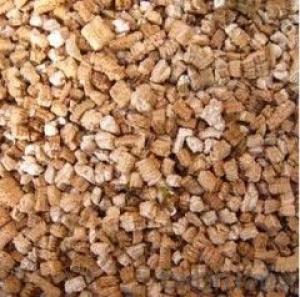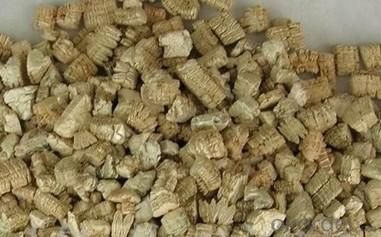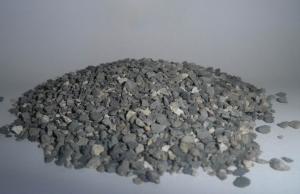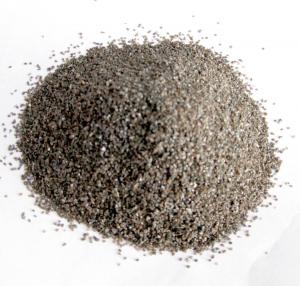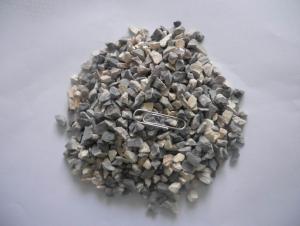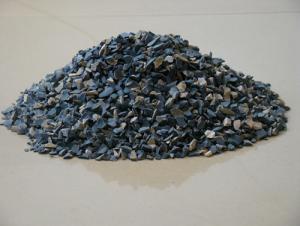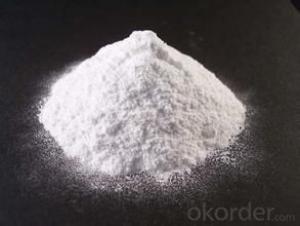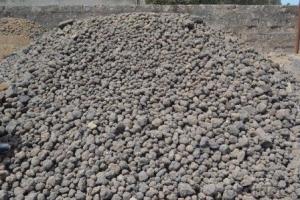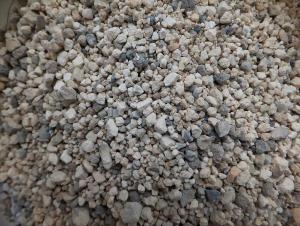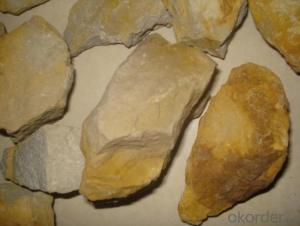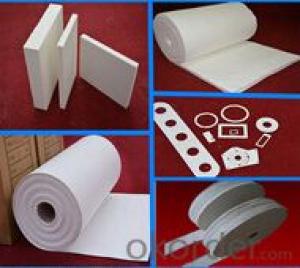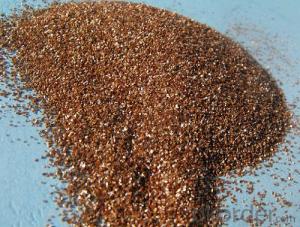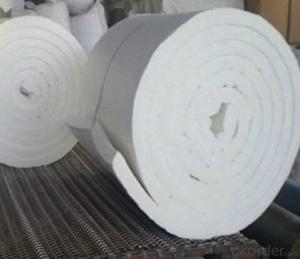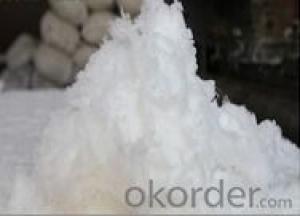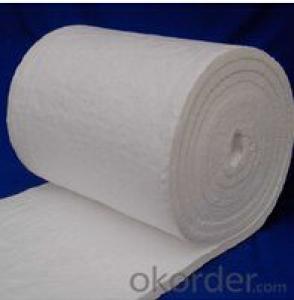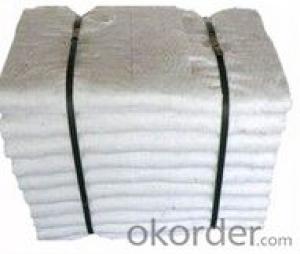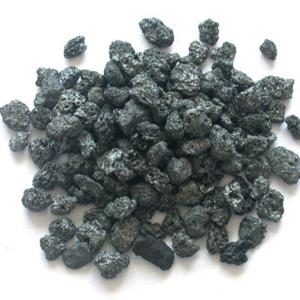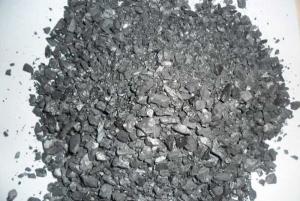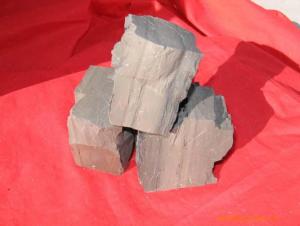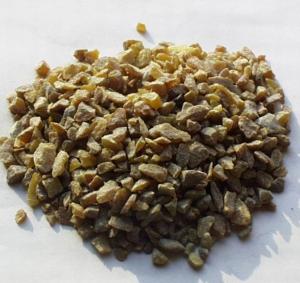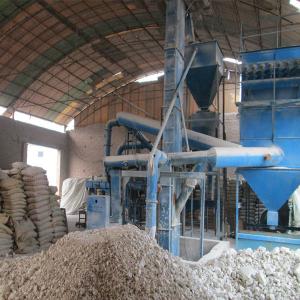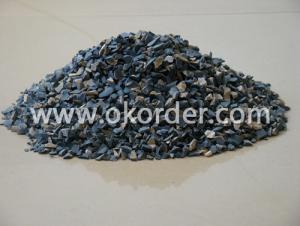Raw Materials for Refractory:Heat Insulating Vermiculite Products
- Loading Port:
- Qingdao
- Payment Terms:
- TT or LC
- Min Order Qty:
- 600 m.t.
- Supply Capability:
- 9000 m.t./month
OKorder Service Pledge
OKorder Financial Service
You Might Also Like
Product Discription:
OKorder is offering high quality Heat Insulating Vermiculite Products at great prices with worldwide shipping. Our supplier is a world-class manufacturer of expanded vermiculite, created using raw vermiculite which is heated to 900-1000 degrees. After heating, the vermiculite’s volume increases by 6-15 times, even as much as 30 times, resulting in an expanded vermiculite with little heat conductivity and excellent thermal insulation. We have supplied Heat Insulating products to European, North American and Asian markets.
Our Heat Insulating Vermiculite Products are ideal for:
Gasket seals
Fireproofing Insulation in steelworks and foundries
Packing material
Animal feedstuffs
Friction linings
Refractory products
Processed vermiculite
Bitumen coated vermiculite plates
Construction coatings
Lightweight concretes
Loose fill insulation
Vermiculite plasters
Fireproof board
Not only are OKorder's Heat Insulating Vermiculite Products of the highest quality and reliability, we are able to quickly ship orders within 20 days of receiving a deposit or original L/C.
Main features of Heat Insulating Vermiculite Products
Excellent thermal insulation
Sound absorbing
Frost resistant
Antibacterial
Fireproof
Water absorbing
Specifications:
Data:
DENSITY (KG/M3) | THERMAL CONDUCTIVITY (W/M.K) | FIRE-PROOF (℃) | MOISTURE ABSORBING (%) | ANTI-FREEZING |
60-200 | 0.047-0.081 | 1300-1350 | >2 | For 15 cycles of freezing and thawing. Particle with no any change at -20℃
|
TEMPERATURE IN USE (℃) | WATER-ABSORBING (%) | SOUND ABSORBING | CORROSION RESISTING | |
900-1000 | 26.5-40.6 | 0.53-0.63 | Alkali-resisting |
FAQ:
Q1: Why buy Materials & Equipment from OKorder.com?
A: All products offered byOKorder.com are carefully selected from China's most reliable manufacturing enterprises. Through its ISO certifications, OKorder.com adheres to the highest standards and a commitment to supply chain safety and customer satisfaction.
Q2: How do we guarantee the quality of our products?
A: We have established an advanced quality management system which conducts strict quality tests at every step, from raw materials to the final product. At the same time, we provide extensive follow-up service assurances as required.
- Q: Does anyone know the characteristics of refractory for glass kiln?
- The characteristics of refractory for glass kiln: First, it can well resist the erosion of glass?fusant and gas actor, and has sufficiently high load softening temperature and thermal stability. Usually we hope the refractories of all parts of the furnace will has no partial early erosion phenomenon to ensure that the entire furnace has a sufficiently long service life. However, due to the different mechanical, physical and chemical conditions of different parts of glass furnace, the performance of refractories should adapt to the glass furnace thereto and at the same time has no adverse effect on the adjacent other kinds of brick materials. Besides, we should consider the price of brick material, we should try to consider using commonly used stereotypes bricks of standard sizes which is cheap and quickly supplied by the warehouse. The damage of glass melting furnace lining is mainly due to chemical erosion, assisted by thermal stress. The degree and speed of chemical erosion is closely related to the applied parts, furnace temperature and melting glass varieties, and of course, the quality of the lining itself is also crucial. The nature of refractories using in the glass furnace has a very significant impact on the operation of glass melting furnace and the quality of glass. The application of poor main beam refractories will not only cause frequent shutdown for maintenance, limiting melting temperature, lowering furnace output, but also shorten the life of the furnace, and make glass has a variety of defects (stripes, stones, etc.), lower the quality of the glass. Here are the description of the nature and purpose of commonly used refractory in glass furnace.
- Q: Can someone professionally introduce the classifications of refractories?
- Whatare the classifications of the refractory index levels? There are three categories of refractory index levels. Anyone familiar with the industry may already know that if you're new to the refractory and don't know much about it, the following information may be helpful to you. Refractory index level can be devided into three general categories of special refractories, advanced refractories and ordinary refractories. The first category, special refractories. Whose refractoriness is higher than 2000 ℃, spinel brick, pure oxide products, high purity directly bonded magnesia-chrome brick, cast products, non-oxide products belong to this grade. The second category, advanced refractories. Whose refractoriness is from 1770 to 2000 Celsius degrees, mullite bricks, high alumina brick, magnesia-alumina brick, ordinary magnesia products, olivine bricks, ordinary magnesia-chrome brick belong to this grade. The third category, ordinary refractories. Whose refractoriness is between 1580 and 1770 Celsius degrees, equivalent to Al2O315% ~ 45% refractory products in the binary system of SiO2-Al2O3. Kaolinite is the main mineral of raw materials.
- Q: Who knows the fire rating of fire?partition with steel stud?
- Partition system made by fire?partition with steel stud and high-quality keel has good fireproofing performance and is non-combustible sheet. Flame burn duration is zero. It does not burn at 800℃, and it is without flame at 1200℃. Its fire resistance rating reaches GB8624-A standard through test, which reaches the highest fireproofing and non-combustible level grade A1. 10MM fire endurance can reach up to 4 hours fire resistance maximum limit. It can absorb a lot of heat during the process of burning and delay the rise of temperature in surrounding environment.
- Q: Why does refractory need to add coarse firstly and then add fine aggregate?
- Adding coarse aggregate is to assure its good combination with fine aggregate. This is just the experience. You don't have to ask.
- Q: What refractories have good mechanical property resistance and heat expansion and cold contraction property?
- Explain that where you use it for and what requirements you have. Follow-up: I use it in metallurgical furnaces with the features of strong stirring and acidic residue.
- Q: Who knows about the criteria of fireproof and thermal insulation materials?
- The standards of fireproof and thermal insulation material. 1. the height of buildings is greater than or equal to 100 m, the combustion performance of thermal insulation materials should be A-level; 2. the height of buildings is greater than or equal 60 m but less than 100 m, the combustion performance of thermal insulation materials should be no less than B2-level. When using B2-level thermal insulation materials, fire barrier zone should be set in each floor; 3. the height of buildings is greater than or equal to 24 m but less than 60 m, the combustion performance of thermal insulation materials should be no less than B2-level. When using B2-level thermal insulation materials, fire barrier zone should be set in every two floors; 4, the height of buildings is less than 24 m, the combustion performance of thermal insulation materials should be no less than B2-level. When using B2-level thermal insulation materials, fire barrier zone should be set in every three floors.
- Q: Is the refractory reached British BS standard and used for cables in China at present ceramic silicone rubber?
- The texture should be designed according to the British relevant BS standard; crosslinked polyethylene or ethylene propylene rubber under 6600V to 19000 / 33000V is not necessarily ceramic silicone. The rated voltages of a small amount of smoke and corrosive gases from 3800 & # 47 when the BS 7835-2000 is affected by fire.
- Q: Firing high temperature kiln of refractory and internal temperature being as high as 1600 ℃, metal heat exchanger can't use, how to do?
- 1>3>。 When metal heat exchanger is in 700 ℃, it must process high temperature protection, mixed cold wind or cold blast to protect heat exchanger. So this will waste a lot of energy; The comparison of high temperature resistant ceramic heat exchanger using temperature is 1350 ℃ to 1450 ℃; metal heat exchanger using temperature 700 ℃; heat utilization comparison of ceramic heat exchanger can be placed in 1350 ℃ or higher (highest available to 1450 ℃); the oxidation resistance, a very short time will burn out;2 >, waste heat recovery rate is high. Replacing the metal heat exchanger in high temperature and corrosion environment; Comparative ceramic heat exchanger can be used under the condition of 1350 ℃ for a long time. Let's make a comparison, if it is a refractory material industry. <, ceramic heat exchanger is simply won't appear, under the condition of equal to ceramic heat exchanger using, energy saving effect is best, can exchange for the high temperature. <. Ceramic heat can be placed on the nearest of exchanger flue outlet . <, and metal heat exchanger put in place contrast to the ceramic heat exchanger. In the process of using metal heat exchanger, if this situation happens, you can consider the ceramic heat exchanger. Temperature difference is between 650 ℃ to 750 ℃. If the metal heat exchanger is placed in normal place where ceramic heat usually put;The service life comparison: since ceramic heat exchanger with high temperature resistance, this partly replace metal heat exchanger. What's more, energy-saving rate is also different. Metal heat exchanger can be placed in 700 ℃ or less;4 >, corrosion resistance, its application effect is very different. So the metal-heat-exchanger's heat-resistant temperature is high and the service life is the countless times of metal heat exchanger. The place with highest temperature does not need high temperature protection.
- Q: Where is the development of refractory industry?
- Refractories for continuous casting is an important part of the continuous casting machine, in addition to the characteristics of general refractory material, also for the purification of molten steel and improve the steel quality, stable molten steel temperature and composition, control and regulate the flow of the molten steel and other functions, so it is called functional refractories.
Send your message to us
Raw Materials for Refractory:Heat Insulating Vermiculite Products
- Loading Port:
- Qingdao
- Payment Terms:
- TT or LC
- Min Order Qty:
- 600 m.t.
- Supply Capability:
- 9000 m.t./month
OKorder Service Pledge
OKorder Financial Service
Similar products
Hot products
Hot Searches
Related keywords
